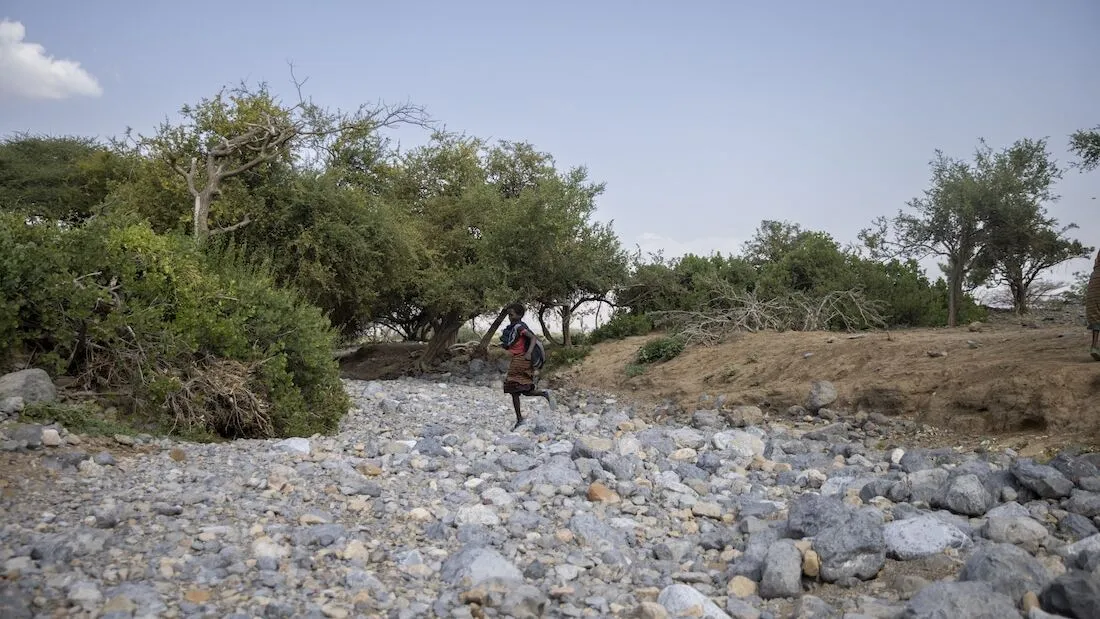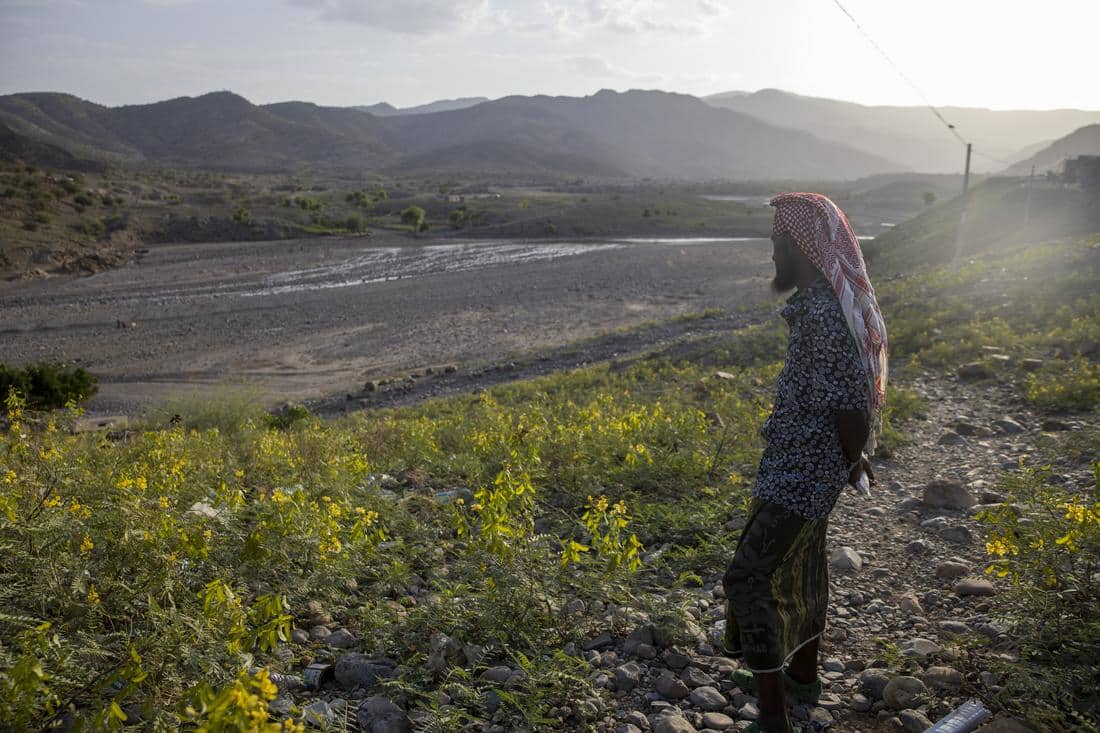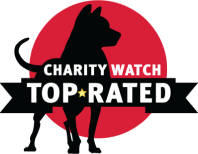Key Global Health Trends To Watch in 2023
Last year was another busy year for the global health community, from responding to emerging diseases to rebuilding health systems as the pandemic disrupted routine health services globally. As the new year begins and we navigate the post-pandemic era, what is at the top of Project HOPE’s global health agenda? Here are five topics we anticipate will lead global health headlines in 2023.

The past three years have shocked the global health system, thwarting or halting progress on many levels.
But we’ve still made gains. In 2022, we saw local frontline health workers, government agencies, and health systems play a critical role in fighting disease threats like Ebola in Uganda, the Mpox outbreak in western countries, and COVID-19 cases worldwide. Local health systems have also been called on to respond as disasters tied to climate change increase, whether it’s flooding in Pakistan, generational drought in the Horn of Africa, or devastating hurricanes in the U.S. Global conflicts have only worsened the problem, affecting local health services namely in Ukraine and Ethiopia, along with political instabilities that disrupted the health of populations in places like Haiti and Venezuela.
As we turn the page on 2022 and begin to rebuild health systems in a post-pandemic world, what’s at the top of the global health agenda? Where should we as a global community be refocusing our efforts? What lost progress must be regained, and what are the greatest threats to headway and change?
As a global health organization that responds in times of crisis, it’s our job to prepare for the worst. But there are plenty of reasons to be optimistic about what can be accomplished in the year ahead and the opportunities we have to improve equitable access to health opportunities for people everywhere.
Here are five critical global health issues we’ll be following in 2023.
1. Rebuilding routine primary health care services amid COVID-19, climate crises, and conflicts.
COVID-19 undid years of progress made in development and global health, as access to essential health services was disrupted around the world. In the first year of the pandemic, 97 million people were pushed into poverty, increasing their chances of poor health. Conflicts and extreme weather have further restricted access to health care, especially among vulnerable populations, and have led to an increase in deaths, disabilities, and mental health challenges.
One of the biggest setbacks of the last three years has been the decline in routine childhood immunization rates. As vaccination rates dropped, the number of children without any dose of vaccine—or zero-dose children—has greatly increased, leading to concerns of various outbreaks of vaccine-preventable diseases: Last year the number of measles cases more than doubled, and polio was detected in countries previously deemed polio-free. The reoccurrence of vaccine-preventable diseases like these poses an urgent risk to global health security, and local health systems are the first line of defense.
The decline in maternal health services has also been a serious concern. In a survey conducted by the World Health Organization, more than half of countries reported disruptions in antenatal care and about one-third in facility-based delivery services in the first few months of the pandemic.
Now that COVID-19 has become endemic, we see refocusing on primary health care services as the top priority for global health. At Project HOPE, we’re helping health systems rebuild their capacity and ability to provide these services and make up for lost time. This includes routine immunization; disease detection and control; maternal and child health; and mental health well-being and resiliency programs for our frontline health workers. We’re supporting local health systems in providing maternal care in high-risk countries like the Dominican Republic and Colombia. We’re helping young people in Mexico avoid diabetes and other noncommunicable diseases, and we’re helping girls in Namibia build a future free of HIV. And in the last 12 months, we’ve trained more than 58,000 health workers around the world to be able to provide better care for their communities.

2. Improving global health security and pandemic preparedness
2022 showed us how a disease like Mpox in Western countries and Ebola in Uganda can quickly spread globally, causing major disruption as the world was busy responding to COVID-19. Various epidemics of vaccine-preventable diseases in 2022 show that there is still critical work that must be done to prevent avoidable outbreaks, improve early detection, and respond rapidly and effectively to meet global health security goals and prevent future pandemics.
How can we use the lessons of COVID-19 to be better prepared to face—or prevent—the next pandemic?
Luckily, there’s international recognition for the need to prioritize and increase collaboration around global health security—collaboration that would address the blind spots and inequities exposed by COVID-19 and ensure access to information and vaccines for all.
Project HOPE is working within some of world’s most vulnerable and marginalized communities to improve global health security and build health systems that are strong, resilient, and prepared to tackle public health threats. We’re doing this in a variety of ways, from helping countries improve real-time surveillance and reporting, to developing eLearning platforms and curriculums to enable health workers to get the information and updates they need to respond effectively—and rapidly.
Additionally, global initiatives like PEPFAR can play a major role in meeting future threats. PEPFAR has already been leveraged to respond to COVID-19, H1N1 influenza, and Ebola with success. As PEPFAR Ambassador John Nkengasong put it earlier this year, we “don’t need to build new systems” to fight future pandemics; we can expand the systems we already have.
The world cannot afford to once again complete another panic-and-forget cycle as we’ve done with past epidemics—we need global, national, and local actors to look at pandemic preparedness and response through an equity lens. If we learned anything from COVID-19, which continues to rage in some parts of the world, it is that we must better prepare the health system for future pandemics and use all the tools at our disposal to more fairly distribute information, therapies and vaccines.
– Dr. Tom Kenyon
3. Addressing the impact of the climate crisis on health
Climate change is the biggest health threat facing humanity—and it’s getting worse. Nearly half the world’s population live in places highly vulnerable to climate change. Between 2030 and 2050, 25 million people are expected to die every year because of climate change if further action isn’t taken.
At the 2022 United Nations Climate Change Conference in Egypt, discussions highlighted the undeniable link between climate change and health, with health professionals playing an increasingly important role in climate talks. The summit closed with the establishment of a dedicated fund to help vulnerable countries cope with the losses and damages—a breakthrough agreement after nearly three decades of neglect.
There are still decisions to be made around where financing will come from, and we’ll be watching as negotiations continue and efforts begin to design and fill the fund.
Climate change has devastating downstream effects on a person’s health. We see the direct cost of a warming climate in our air pollution, food production, heat waves, and extreme weather, like in the Horn of Africa. We can also see the effects more broadly, in widespread conflict and displacement, which leads to large outbreaks of infectious diseases. As climate change accelerates, the risk of exposure to water- and vector-borne illnesses will only worsen.
At Project HOPE, we’ll continue to help communities build their resilience to the impacts, and stand ready to respond when natural disaster strikes. Last year, when Hurricane Fiona and Hurricane Ian struck the Caribbean and Florida, we worked hand-in-hand with local partners and ministries of health to empower and strengthen health systems when they needed it most.

4. Keeping up the fight against noncommunicable diseases
In the beginning of the pandemic, 75% of countries experienced disruption to essential services to prevent and treat NCDs, exacerbating the burden of the world’s number one killer. People living with noncommunicable diseases were also at higher risk of hospitalization and death due to COVID-19. Every year 17 million people under the age of 70 die of NCDs, and 86% of them live in low- and middle-income countries.
Comorbidities for those living with NCDs with infectious diseases are very concerning. People living with HIV are more likely than the general population to get lung cancer or cervical cancer, and people with diabetes are more likely to get TB. In 2020, 730,000 TB episodes were estimated to be linked to tobacco smoking. People with NCDs are more likely to have severe health outcomes not just from COVID-19, but also from diseases like TB and HIV. Programs like PEPFAR designed for infectious diseases like HIV now have to focus on providing more holistic health care as patients age—not just HIV treatment, but also support for health issues like hypertension, diabetes, and cancer.
In the latest report from WHO, new data underscores the scale of the threat: Every two seconds, someone under 70 dies of an NCD like heart disease, cancer, or diabetes. These chronic diseases now supersede infectious disease as the “top killers” worldwide.
The report calls for urgent action at national and international levels: stronger leadership and commitment to increasing visibility, greater investment in specific prevention and treatment interventions, more robust health systems that include NCD services, and protection for populations at highest risk.
In 2022, Project HOPE programs reached more than 1 million people with or at risk of NCDs. This included helping 218,500 people get screened so they could begin treatment and helping 78,000 people living with NCDs better understand and manage their condition. This year, we’ll remain committed to helping young people make healthier choices, building greater awareness around the links between NCDs and their leading risk factors, and ensuring health workers have the skills and tools they need to address these diseases.

5. Improving access to mental health services
COVID-19 was a “wake-up call” for the urgent need to strengthen mental health systems worldwide. In addition, ongoing conflicts such as Russia-Ukraine conflict and extreme weather events have caused a rise in mental health needs. In the U.S., the new 988 national mental health crisis line has seen a significant rise in call volume in six months. The U.S. Surgeon general last May raised the alarm on health worker burnout and resignation as there is a projected shortage of 140,000 physicians by 2033. Globally, frontline health workers have raised similar concerns due to a lack of protective gear, delays in salary payments, and a lack of appreciation for their efforts in pandemic response.
Despite the prevalence of mental health issues, and the alarming rise in numbers over the past few years—especially among young people, women, and health workers—mental health services were severely disrupted during the pandemic. These services are also still in a largely nascent stage. More attention is being paid to the crisis, but major gaps remain, and lack of access is still one of the main barriers to care in resource-limited settings. In many low-income countries, there is fewer than 1 mental health worker for every 100,000 people, and seeking support online (in lieu of face-to-face attention) simply isn’t an option.
Project HOPE is committed to ensuring everyone has access to the health care they need to reach their full potential, including mental health. Over the past few years, we have collaborated with NYC Health & Hospitals to adapt their mental health curriculum for frontline health workers and have trained more than 70,000 health workers in over 40 countries to protect their mental health and well-being. In 2023, we’ll continue expanding access to mental health care—not just for health workers, but also for refugees, new mothers, and communities globally.
Dr. Nagesh Borse is Project HOPE’s Deputy Chief Health Officer based in Washington, D.C.







